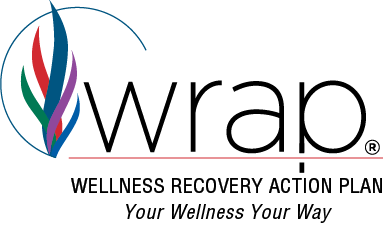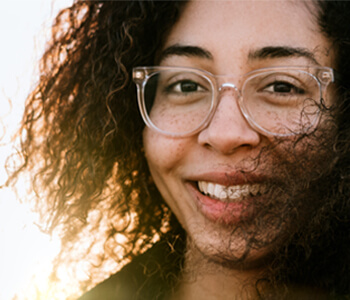Mindfulness is a simple, safe, free and non-invasive, yet powerful self-help technique that can be used to feel better and to stay well. It can be successfully and easily used in all kinds of situations. Although you may find it difficult at first, with daily practice it can become a habit that you can include in your Wellness Toolbox and in your WRAP action plans.
by Karen Bachand
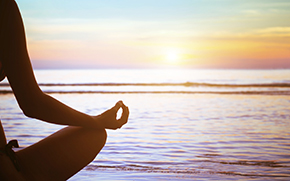 I cannot say that I really understood how I had a major downfall, both physically and, then, mentally, especially when I was first diagnosed with anxiety and depression. What lay before me, every day, was a plethora of symptoms – feeling as if a cocoon lay over me with small holes I eventually punctured that let in tiny rays of light, e.g. hope. Every day was drudgery and the main advice I received was to “take it one day at a time.” I wondered which would be the magic day I’d wake up and find myself whole again? So I tried to wait it out. Much later on my sister, Marguerite, found treatment for me and I began paintings through the ups and downs of my illness with my fellow travelers. Wellness was discussed in terms of being able to resume my career. I accepted the responsibility to take on this persistent health challenge.
I cannot say that I really understood how I had a major downfall, both physically and, then, mentally, especially when I was first diagnosed with anxiety and depression. What lay before me, every day, was a plethora of symptoms – feeling as if a cocoon lay over me with small holes I eventually punctured that let in tiny rays of light, e.g. hope. Every day was drudgery and the main advice I received was to “take it one day at a time.” I wondered which would be the magic day I’d wake up and find myself whole again? So I tried to wait it out. Much later on my sister, Marguerite, found treatment for me and I began paintings through the ups and downs of my illness with my fellow travelers. Wellness was discussed in terms of being able to resume my career. I accepted the responsibility to take on this persistent health challenge.
So, I continued down the road, interacting with people daily; yet, how much could I really say that I knew of what I was doing? The process was more than my intellectual means could comprehend, yet I navigated the system to find answers and solutions. So, I asked myself, continually, what could I have done to make my life easier? Then, in 2009, I was given a little red book on the WRAP. I looked in it and found a plan, which I began to follow. One huge suggestion – always keeping Peer Support at the forefront – was accessing my “Wellness Toolbox.” I learned, through brainstorming with others about “mindfulness,” a type of self-love that had alluded me prior to the WRAP.
I particularly use it in the section of “When Things Are Breaking Down” when I need some emotional guidance. I write down a sensation that I am feeling, such as being overwhelmed; then, jot down a sentence on how it transpires within me, such as, “It feels cold.” I follow-through by asking the question, “Where do I feel it?” For me, it is in the front portion of my forehead and eyes.” This process brings sensory clarification and enables me to become calm and more focused to reach beyond the “just coping” phase. It is something that really works when completed with peers.
So I conclude with this thought, and answer the wonderment of how peers are so important to one’s recovery and finding techniques, such as “mindfulness.” It is just this: each one of us, at one time or another of our lives, will look upon ourselves and ask the same question, “We are willing but what, if anything, is needed to help us better our behavioral health condition?” It is true that sometimes we cannot help ourselves, either we don’t know what part of ourselves to access or, more often than not, the part we want to dig into is unknown. And so, we can turn to those who sojourn on this personal journey with us, and we can come to know the answers to our questions; it will not elude us because we can still support ourselves and others, and find something that resonates with us.
Although I did not always understand what was going on with my emotional states, I could always count on WRAP for guidance. I have always lived my life according to my own principals so it became easier to mine for things to fill in WRAP. It still holds true today. My path is my own and the WRAP augments it. It truly has become a “living” document.
Ms. Bachand is an educator with a Master of Arts in Education from the University of San Francisco and a Liberal Arts degree from Saint Mary’s College of California. She has been active in the mental health field for many years.
Learn More About WRAP

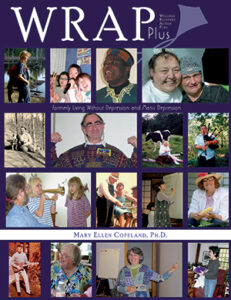
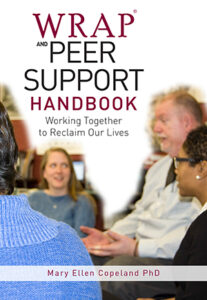

Mary Ellen Copeland, PhD, developed Wellness Recovery Action Plan (WRAP) with a group of people with lived experience who were attending a mental health recovery workshop in 1997. She is the original author of the WRAP Red Book, as well as dozens of other WRAP books and materials. She has dedicated the last 30 years of her life to learning from people who have mental health issues; discovering the simple, safe, non-invasive ways they get well, stay well, and move forward in their lives; and then sharing what she has learned with others through keynote addresses, trainings, and the development of books, curriculums, and other resources. Now that she is retired, and that, as she intended, others are continuing to share what she has learned, she continues to learn from those who have mental health issues and those who support them. She is a frequent contributor to this site.



